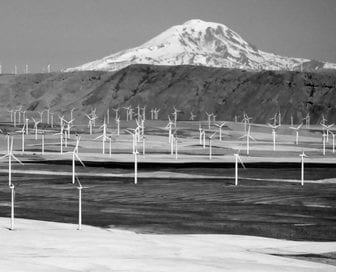Ninety countries representing 90% of the global economy are committed to reducing their greenhouse emissions and are taking action to do so.
This is one of the take-home messages from the Climate Commission’s report “The Critical Decade: International Action on Climate Change”, released today. The report is based on a comprehensive survey of what is being done in Australia and the rest of the world to reduce carbon emissions.
The report explodes the myth that Australia is going it alone on climate change, or is leading the world in taking action. Not only are the world’s wealthy countries taking action, but large developing countries like China and India are moving on emission reductions.
Although China’s overall emissions are still growing, they have already come a long way in decoupling their emissions from economic growth. The country is also positioning itself to become a world leader in renewable energy technologies, and by 2011 had more installed renewable energy generation capacity than any other country in the world.
Many of the world’s wealthiest countries have been taking effective action on climate change for more than a decade. Over that period 12 of the world’s wealthy countries – Belgium, the Czech Republic, Denmark, France, Germany, Great Britain, Hungary, Japan, Portugal, the Slovak Republic, Sweden and the United States – have all reduced their emissions of carbon dioxide while their economies have continued to grow.
While a variety of low-carbon technologies – including hydropower, biomass and nuclear – are playing a role in emission reductions around the world, the rise of renewable energy technologies like solar and wind has been spectacular over the past few years.
Global investment in renewable power and fuels has increased six-fold since 2004 and totalled $US257 billion in 2011. The uptake of renewable energy is happening faster than most experts had expected, and the costs are also dropping faster. Over the past four years the cost of photovoltaic solar cells dropped by 75%, and by 45% in just the last year.
The United States is making major contributions to the development and implementation of renewable energies. In the second quarter of 2012 wind energy in the US reached 50 gigawatts of electric capacity.
Germany is meeting its emission reduction targets at the same time it is phasing out nuclear energy by making renewable energy the centerpiece of its strategy. It already has 50 gigawatts of installed wind and solar power, and it installed more solar photovoltaic units in 2010 than the entire world did in 2009. Interestingly, Australia’s worst region for its solar energy resource (southwest Tasmania) is still better than Germany’s best region for solar energy.
With the implementation of the carbon pricing scheme and a number of other measures to reduce emissions, Australia is now joining this rapidly growing group of countries that are taking effective action on climate change.
It is certainly appropriate that we do so. Australia is one of the world’s carbon heavyweights – the group of 20 countries that contribute 75% of the world’s greenhouse has emissions. In fact, we sit 15th on that table, emitting more than 180 other countries do. On a per-person basis, we are the largest emitter in the developed world.
Our action is important globally as it supports those countries that are already taking significant action on climate change and encourages those that are still lagging behind. It also puts us in a stronger and more credible position to help shape a more globally coordinated response to climate change.
Domestically, our moves to reduce carbon emissions put us on the front foot to deal with the global response to the climate change challenge. Rather than being in a reactive position, we can better manage the risks and capitalise on the opportunities that are emerging on the global stage.
The world is entering the clean energy era and the momentum is growing. This is the critical decade to turn the global carbon emissions trend downwards.
Will Steffen is an Australian Climate Commissioner, and executive director of the ANU Climate Change Institute at Australian National University. This article first published on The Conversation. Reproduced with permission.










